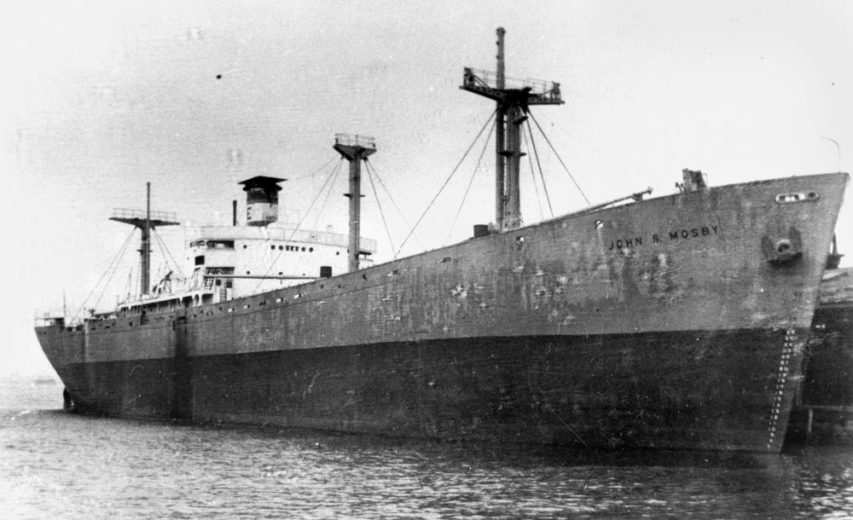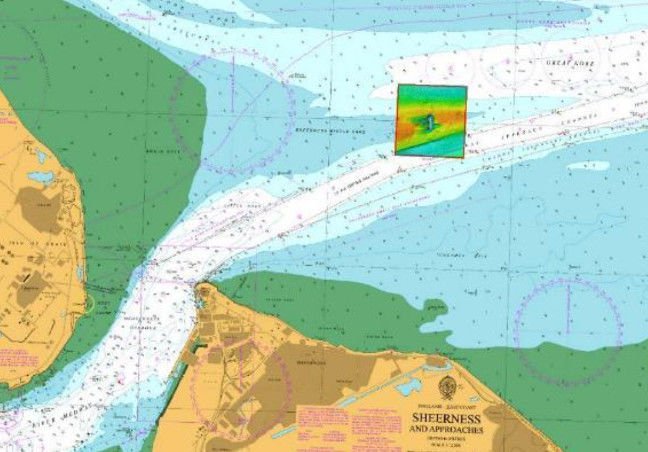The SS Richard Montgomery was a WW2 Liberty ship that ran aground near Sheerness in August 1944 carrying a cargo of bombs and other explosives. Part of the cargo was removed before the ship broke up and sank just offshore. There’s still quite a lot of TNT onboard the wreck, and it’s recently come to light that someone has been visiting the wreck, thanks to fitness tracker data:

The SS John S. Mosby, a Liberty ship similar to the SS Richard Montgomery
Photo from the John Oxley Library, State Library of Queensland, via Wikimedia.
The information came to light after social media users realised that the latest version of Strava’s heat map, which shows the aggregated routes of all of its users, could be used to figure out where Western military bases in the Middle East are. Fitness-conscious soldiers, running around the bases’ perimeters, built up visible traces on the heat map over time.
However, of much more concern is the revelation that people have been poking around the wreck of the SS Richard Montgomery, a Second World War cargo ship that was carrying thousands of tonnes of explosive munitions from America to the UK. The ship grounded in the Thames Estuary, in England, in August 1944, barely two miles north of Sheerness.
Extract from Admiralty chart of Sheerness (Crown copyright):
The multicoloured box is the location of the SS Richard Montgomery wreckAlthough wartime salvage parties managed to scavenge a large amount of ordnance from the grounded Liberty ship, her hull split in two and sank, taking around 1,400 tonnes of explosives down with her, before the job could be completed. Officials decided to leave the wreck in place.
According to a 1995 survey report [PDF] on the wreck: “The bombs thought to be on board are of two types. The bulk are standard, un-fused TNT bombs. In addition, some 800 fused cluster bombs are believed to remain. These bombs were loaded with TNT. They could be transported fused because the design included a propeller mechanism at the front which only screwed the fuse into position as the bombs fell from an aircraft. All the bombs could therefore be handled – with care – when the accident occurred.”
[…]
The 1995 report noted that TNT “does not react with water and will not explode if it is damp”, before adding that the brass-cased cluster bombs’ lead-based fuses “will combine with brass to produce a highly unstable copper compound which could explode with the slightest disturbance”. Although the compound “if formed, will wash away in a few weeks”, it was not made clear in the report how often the compound forms and creates the dangerous hair-trigger condition. Experts believe that the best way of keeping the wreck safe is not to disturb it, which led to a 500-metre exclusion zone being imposed around it.
I thought the ship’s name sounded familiar … I posted a video about the dangers of this wreck back in 2013. Last month, I posted a video about the Liberty ship program.




